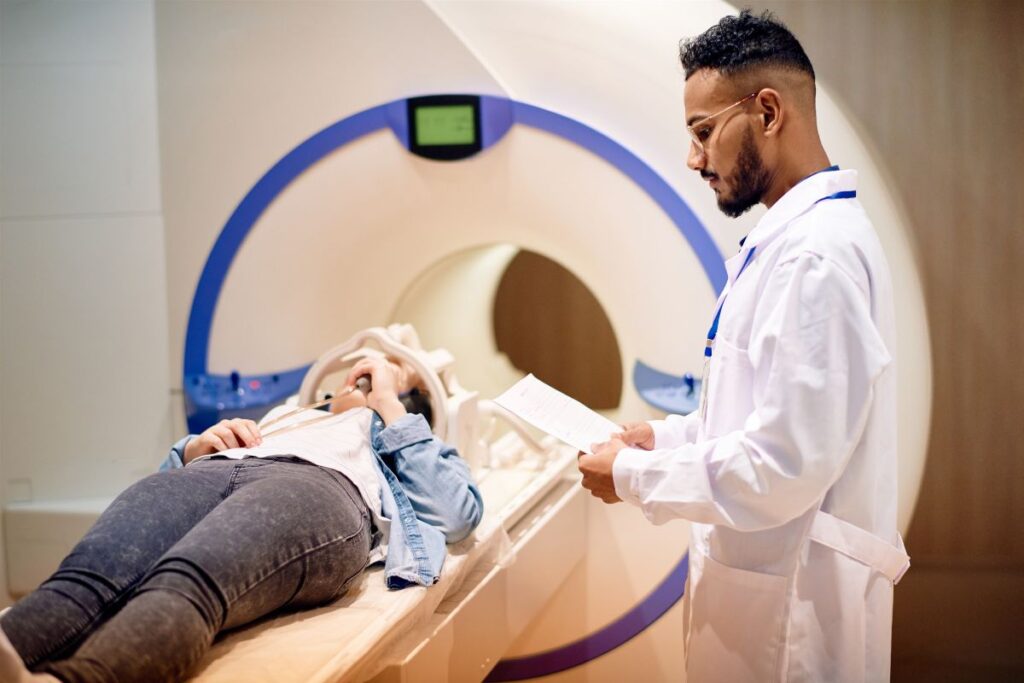In the realm of medicine, there are countless unusual medical conditions, but some are so rare and peculiar they almost defy belief. Here are a few such conditions, each a testament to the vast and mysterious nature of human health.
The Girl Who Couldn’t Stop Sneezing
In 2015, Inside Edition reported on Caitlin Thornley, a 12-year-old from outside Houston, who sneezed over 12,000 times a day. This condition severely impacted her daily life, making it difficult for her to complete sentences without being interrupted by a sneeze. The situation was exacerbated by bullying at school, which only added to her distress. Interestingly, Caitlin found solace in music, particularly The Beatles, which offered her brief moments of relief. Despite extensive medical examinations, doctors were unable to determine the cause of her incessant sneezing, ruling out allergies and viruses. Lauren Johnson, another teenager with a similar condition triggered by a strep throat infection, offered Caitlin encouragement, emphasizing resilience and the importance of not letting others’ opinions bring her down.
Uncontrollable Laughing Linked to PBA
The condition of uncontrollable laughing, as depicted by Joaquin Phoenix’s character in Joker, is real and known as Pseudobulbar Affect (PBA). Individuals with PBA experience sudden, uncontrollable episodes of laughing or crying, often unrelated to their emotional state. Inside Edition spoke with a former nurse who struggled with PBA, highlighting the social misunderstandings and isolation that can accompany the condition. Psychologist Jeff Gardere explained that PBA is a neurological disorder that can significantly disrupt one’s life, leading many to withdraw from social interaction due to their inability to control these emotional outbursts.

A Toddler Allergic to Water
In 2018, the story of Ivy, a toddler who developed an allergic reaction to water, captured attention. Baths, once a source of enjoyment, became a perilous activity, with mere seconds of exposure causing her skin to redden and blister. Ivy’s condition, known as Aquagenic Urticaria, is exceedingly rare, affecting fewer than 100 people nationwide. It posed challenges not just in bathing but in everyday activities, as Ivy was allergic to her own tears. Despite these obstacles, her parents, Brittany and Daniel, sought to provide her with a semblance of normalcy, utilizing wet wipes for cleaning and managing her exposure to water meticulously.
The Phenomenon of Uncombable Hair Syndrome
Lastly, the phenomenon of Uncombable Hair Syndrome, encountered by siblings Kyra, Jaylee, and Charlie, demonstrates the diversity of genetic conditions. Characterized by hair that is impossible to tame and often described as looking as if one has “stuck a finger in a light socket,” this condition is both rare and benign. With only about 100 documented cases worldwide, those affected have hair that is typically white or strawberry blonde and almost always grows out of the condition by puberty. Despite the challenges of managing their unique hair, these families embrace their distinctiveness, finding beauty in being different.
Each of these conditions illustrates the complexity and unpredictability of human health, reminding us of the incredible diversity within our own species.
Conclusion:
In exploring these rare and extraordinary medical conditions, we are reminded of the boundless intricacies of the human body and the challenges that come with understanding it. From the baffling case of a girl who couldn’t stop sneezing to the poignant struggles of those living with uncontrollable laughter due to Pseudobulbar Affect, each story sheds light on the resilience of the human spirit in the face of adversity. The case of a toddler allergic to water underscores the profound impact that rare conditions can have on daily life, not just for the individuals directly affected but also for their families. Meanwhile, Uncombable Hair Syndrome highlights the beauty in our differences and the importance of embracing what makes us unique.

These conditions, while being 1 in a million, serve as a powerful reminder of the vast spectrum of human health and the ongoing quest for medical understanding and compassion. They underscore the importance of research, awareness, and support for those who navigate the world with conditions that defy easy explanation. As we continue to unveil the mysteries of the human body, let us approach each discovery with empathy, curiosity, and a commitment to improving the lives of all individuals, regardless of the rarity of their conditions. In doing so, we not only advance medical science but also foster a more inclusive and understanding society.
Frequently Asked Questions (FAQ) About Unusual Medical Conditions
1. What causes these unusual medical conditions?
The causes of many unusual medical conditions vary widely and can include genetic mutations, rare reactions to infections, neurological disorders, and unknown factors. For instance, Aquagenic Urticaria (water allergy) and Uncombable Hair Syndrome are believed to have genetic components, while the onset of conditions like uncontrollable sneezing or laughing (Pseudobulbar Affect) can be triggered by other medical issues or remain idiopathic, meaning their cause is unknown.
2. How are rare medical conditions diagnosed?
Diagnosing rare medical conditions often involves a comprehensive evaluation, including detailed medical history, physical examinations, laboratory tests, genetic testing, and sometimes consultations with specialists. Due to the rarity and complexity of these conditions, diagnosis can be challenging and may require time and multiple evaluations to reach a conclusive diagnosis.
3. Are there treatments available for these conditions?
Treatment options vary depending on the specific condition and its underlying cause, if known. Some conditions may have no cure but can be managed with medications, lifestyle adjustments, or supportive therapies to alleviate symptoms. For example, antihistamines can help manage symptoms of Aquagenic Urticaria, and certain medications can reduce the severity of Pseudobulbar Affect (PBA) episodes.
4. Can these conditions be cured?
Many unusual medical conditions are chronic and have no definitive cure. Management and treatment focus on alleviating symptoms, improving quality of life, and addressing any underlying causes when possible. However, research is ongoing, and advances in medical science may offer new treatments or insights into these conditions in the future.
5. How can individuals with unusual medical conditions find support?
Support for individuals with rare medical conditions can come from various sources, including healthcare professionals, support groups, online communities, and organizations dedicated to specific conditions or rare diseases in general. These resources can provide valuable information, emotional support, and connections to others facing similar challenges.
6. Why is awareness about these conditions important?
Raising awareness about rare medical conditions is crucial for several reasons. It can help improve early diagnosis and treatment, increase funding and research efforts, reduce stigma and misunderstanding, and support affected individuals and their families. Awareness also promotes empathy and inclusivity in society towards those living with these conditions.
7. Can lifestyle changes help manage these conditions?
For some conditions, lifestyle changes can play a significant role in managing symptoms and improving overall well-being. This may include dietary modifications, environmental adjustments, stress management techniques, and avoiding known triggers. Healthcare providers can offer guidance on specific changes that may benefit individuals based on their condition.
8. How do families cope with the challenges of unusual medical conditions?
Families facing the challenges of unusual medical conditions often benefit from seeking support, education about the condition, and connecting with others in similar situations. Coping strategies can include focusing on effective communication, seeking professional counseling, and prioritizing self-care alongside caregiving responsibilities.


